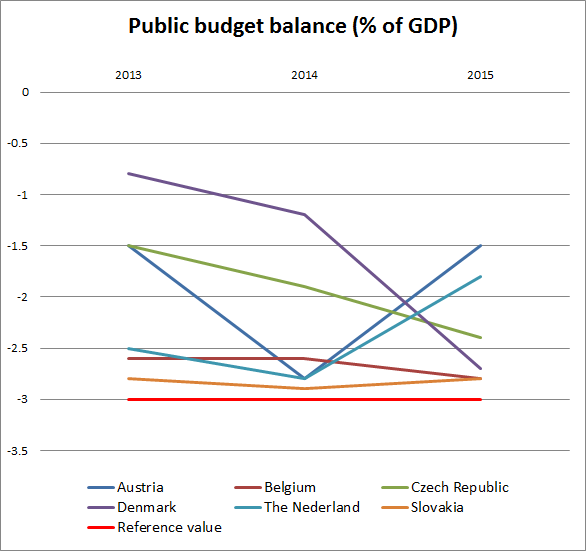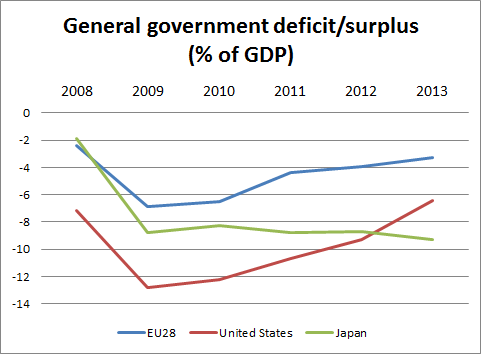

Accessibility tools
Service tools
Language
Navigation path
EU countries have agreed that they should limit the amount governments can borrow each year to 3% of GDP and their total degree of indebtedness to 60%.
The Excessive Deficit Procedure (EDP) is the EU's step by step procedure for correcting excessive deficit or debt levels.
Sound public finances encourage growth because borrowing costs money. By avoiding excessive deficits and excessive debts, governments can spend more on useful things like education, or infrastructure, and less on interest charges to banks.
|
In January 2011: 24 countries
|
After 20 June 2014: 11 countries
|
A decision on closing an EDP is based on a "durable correction" of the excessive deficit. This is deemed achieved if:
the notified data for the previous year (2013 in these cases) show a deficit below 3% of GDP; and
the Commission forecasts that the deficit will not exceed the 3% of GDP reference value over the forecast horizon (currently 2014 and 2015)
On 20 June 2014, the Council closed the EDPs for Belgium, Czech Republic, Denmark, The Netherlands, Austria and Slovakia.

Source: The Commission's Spring Economic Forecast

Additional tools